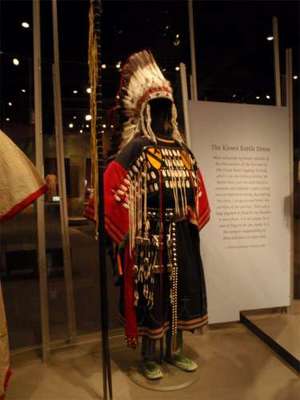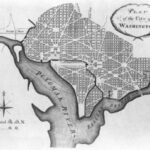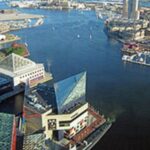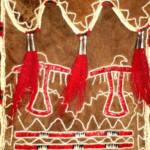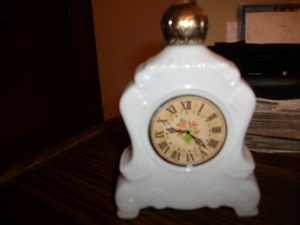Washington, D.C. is the capital of the United States. A place that is both haunted and haunting. It is a city filled with history. It gained attention again because of the Presidential Inauguration. Before there was a Washington, DC, there was forest and swamp inhabited by the Native American Tribe of Piscataway. The recorded history of the Piscataway begins in 1608, when Captain John Smith of Virginia sailed up the Potomac and touched at several of their villages, including Nacochtank. The Piscataway tribe lived along the Piscataway Creek in the Prince George’s region of Maryland up to our Nation’s Capital. Most of the tribe settled comfortably in small villages and camps along the Chesapeake Bay. Their dialect was Algonquian.
The Piscataway’s sense of peace was interrupted on March 25, 1634 when Lord Cecil Calvert and his Catholic crew landed, and began establishing the English Colony of Maryland. Calvert came to Maryland as a means of making it home for all people of the Catholic faith. As with Europeans trying to conquer occupied lands, the Piscataway Tribe knew that the English Lord wanted something that they may or may not have been opt to give. The tribe practiced a traditional religion, and could not interpret the English language. They did not understand a foreign faith. The Piscataway had no idea what Cecil Calvert was saying.
Besides Piscataway, which was a palisade village or “fort”, they had about thirty other settlements, among which may be named Yaocomoco, Potopaco (Port Tobacco), Patuxent, Mattapanient (Mattapony), Mattawoman, and Nacochtank (Latin Anacostan, now Anacostia, D.C.). With time the Piscataway were asked to leave the prime lands around the Chesapeake. Not only were they being forced out by the Catholics, but in the Northwest, the Susquehannocks, a warring tribe also wanted to drive the Piscataway off their land and annihilate them. The Susquehannocks did not want to coexist, and attacked the Piscataway on many occasions. They advanced into the Piscataway’s territory, and raided their villages in the town of Nacotchtant, which is now the area called Anacostia.
Besides the raids, other methods were used to drive the Piscataway tribe away. Some of these include, demoralization by liquor dealers, hunting by slave-catchers, and exposure to smallpox, forbidding them use of guns for their own defense, destroying of their lands by cattle and hogs, and breaking their pride by the oppressive restrictions. The Susquehannocks and Calvert’s men destroyed the Piscataway. Encroachments still continued, however, and the conquest of the Susquehanna by the Iroquois in 1675 only brought down upon the Piscataway a more cruel and persistent enemy. In 1680 nearly all the people of one town were massacred by the Iroquois, who sent word to the assembly that they intended to exterminate the whole tribe. By 1697 the Piscataway left their homes. The Piscataway tribe either merged into other tribes or died from diseases. Their original population was probably nearly 2500.
They began a slow migration northward; stopping for long periods at various points along the Susquehanna until in 1765 we find them living with other remnant tribes at or near Chenango (now Binghamton, New York) and numbering only about 120 people. Thence they drifted west with the Delaware tribe, and made their last appearance in history at a council at Detroit in 1793.
Although a few families identified themselves as Piscataway Indians (the Proctors and Tayac are well known)by the early twentieth century, prevailing racial attitudes during the eighteenth and nineteenth centuries, and Jim Crow policies of the twentieth century determined ethnic and cultural identification. With the enforcement of the “one-drop rule”, anyone with a discernible amount of African ancestry would be classified as “negro”, “mulatto”, or “black”, thereby discounting any other ancestry. With the nullification of American Indian identity through census enumeration and state legislation, any standing American Indian treaty rights were much easy to abrogate. The American Indian reservations were dissolved by Maryland Colony in the eighteenth century, and the Piscataway was reclassified as “free people of color”, “Free Negro” or “mulatto” on state and federal census records in the nineteenth century. This process of detribalization was set into motion the implications of which were carried well into the twentieth century. Contradictorily, while the Piscataway were enumerated as “mulattos” in state and federal census records, Catholic parish records and ethnographic reports continued to identify the Piscataway as Indians.
Areas carrying the Piscataway name are Piscataway Park National Park, Maryland is a waterfront park established to protect the natural and cultural elements along the Maryland shoreline that serve as the view shed to Mount Vernon. Piscataway Township is a Township in Middlesex County, New Jersey.
Work Cited:
Chambers, Mary E. and Robert L. Humphrey. Ancient Washington-American Indian Cultures of the Potomac Valley. George Washington University, Washington, D.C. 1977.
Goddard, Ives (1978). “Eastern Algonquian Languages.” In Bruce Trigger (ed.), Handbook of North American Indians, Vol. 15 (Northeast). Washington, DC: Smithsonian Institution, pp. 70-77.
Griffin, James B. “Eastern North American Prehistory: A Summary.” Science 156 (1967):175-191.
Hertzberg, Hazel. The Search for an American Indian Identity: Modern Pan Indian Movements. NY: Syracuse University Press, 1971.
Merrell, James H. “Cultural Continuity Among the Piscataway Indians of Colonial Maryland.” William & Mary Quarterly, 3rd series, 36 (1979): 548-70.
Mooney, J. (1911). Piscataway Indians. In The Catholic Encyclopedia. New York: Robert Appleton Company. Retrieved January 25, 2009 from New Advent: ttp://www.newadvent.org/cathen/12114a.htm
Potter, Stephen R. Commoners, Tribute, and Chiefs: The Development of Algonquian Culture in the Potomac Valley. Charlottesville: University Press of Virginia, 1993.
Rountree, Helen C., Clark, Wayne E. and Mountford, Kent. John Smith’s Chesapeake Voyages, 1607-1609. Charlottesville: University of Virginia Press, 2007.
Tayac, Gabrielle. “National Museum of the American Indian ? ‘We Rise, We Fall, We Rise’ ? a Piscataway Descendant Bears Witness at a Capital Groundbreaking.” Smithsonian 35, no. 6 (2004): 63-66.
Sources:
Archives of Maryland (29 vols., Baltimore, 1883-1900)
BOZMAN, History of Maryland (2 vols., Baltimore, 1837)
BRINTON, The Lenape and their Legends (Walam Olum) (Philadelphia, 1884)
HUGHES History of the Society of Jesus in North America I, 1580-1615 (Cleveland, 1907)
MOONEY AND OTHERS, Aborigines of the District of Columbia and the Lower Potomac in American Anthropologist, II (Washington, 1889)
New York Colonial Documents (15 vols., Albany, 1843-87), s.v. Conoy; Piscataway, etc.
SHEA, Catholic Indian Missions (New York, 1854)
SMITH, General History of Virginia (London, 1629; Richmond, 1819), ed. ARBER (Birmingham, 1884) WHITE, Relatio Itineris in Marylandiam, Maryland Historical Society Fund pub. no 7 (Baltimore, 1874).
